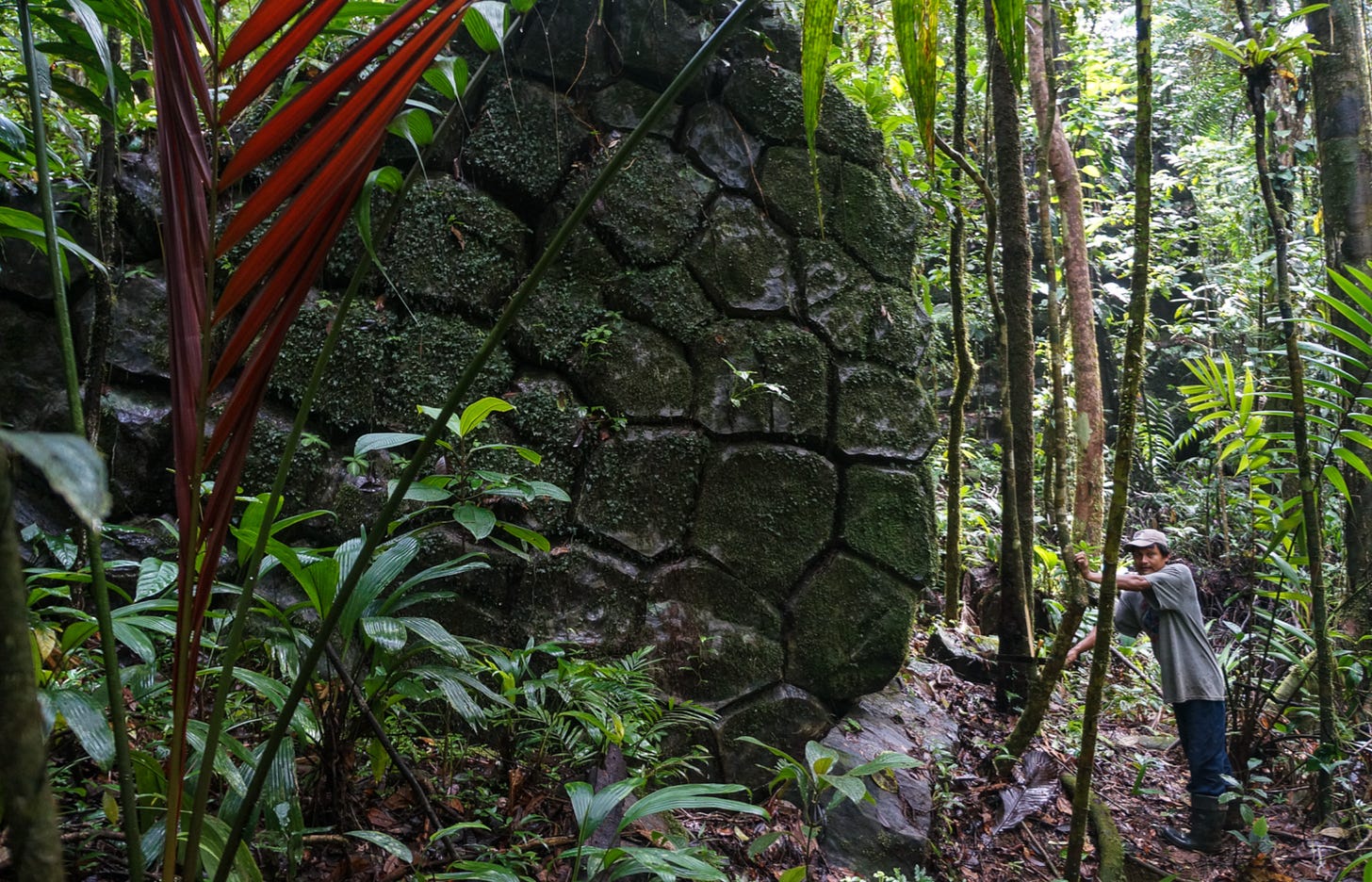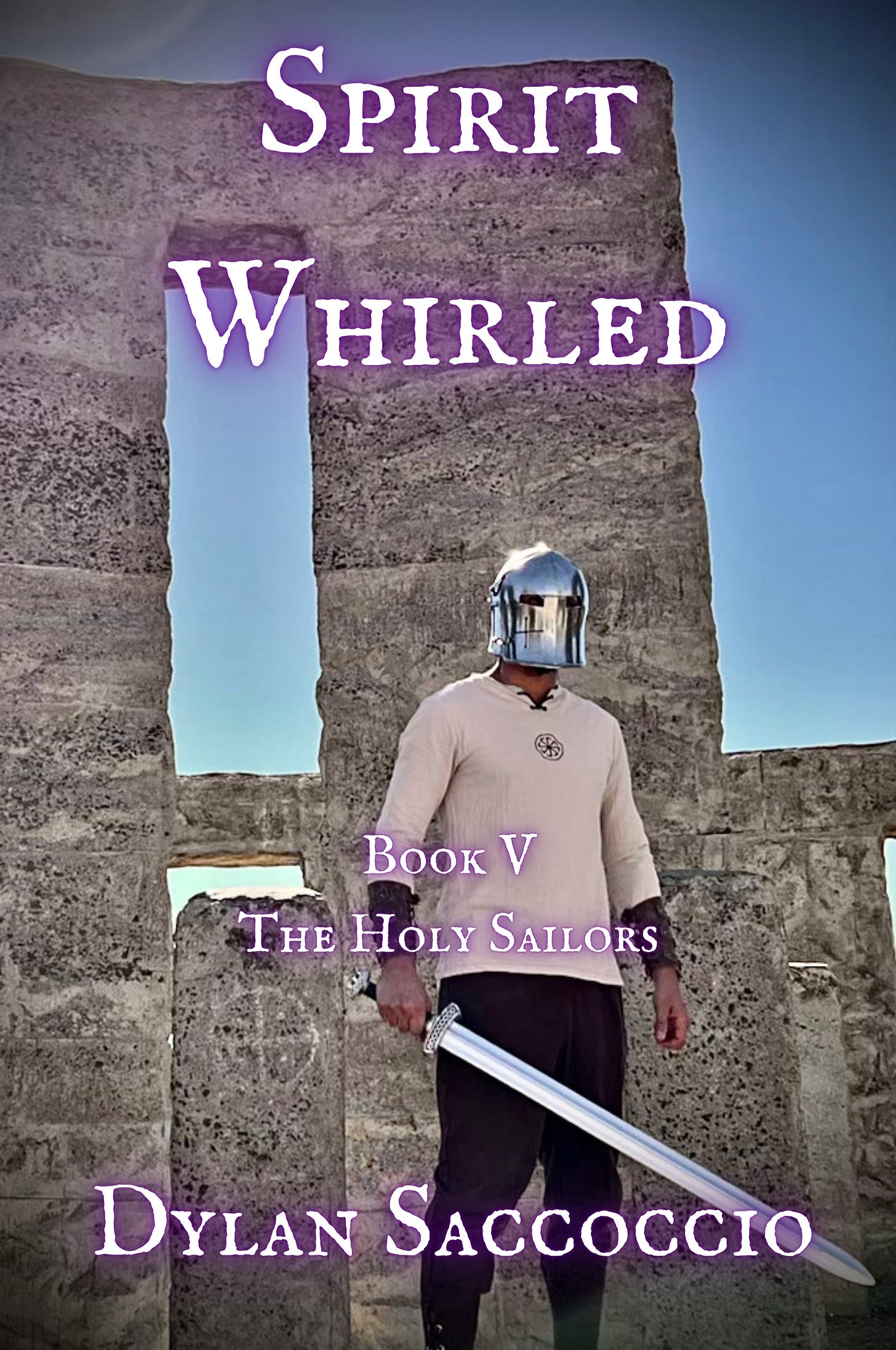Is the Masonry in Canta Gallo, Nicaragua, In the Jungle of Indio Maíz, a Technique of the Holy Sailors?
Or is it Geological Phenomena?
Look at the masonry. It’s polygonal. It doesn’t quite match the technique of the Old World, but keep in mind the effect of water on rocks in the jungle vs. the lack thereof in an arid region of the Mediterranean. I will remind you of a quote included in Spirit Whirled: The Holy Sailors regarding what Bishop Thirwall established, “The most ancient architectural monuments of Europe, which may perhaps outlast all that have been raised in later ages, clearly appear to have been the work of their hands. The huge structures, remains of which are visible in many parts of Greece, in Epirus, Italy, and the western coast of Asia Minor (as well as the Americas), and which are commonly described by the epithet of Cyclopean, because according to the Greek legends, the Cyclopes built the walls of Tyryus and Mycenæ, might be with more propriety called Pelasgian, from their real authors.”
In Spirit Whirled: The Holy Sailors, I proved that the Pelasgoi, also known as the Dioi Pelasgoi, the Holy Sailors, are Etrusco-Phoenicians, by the fact that it was the Phoenicians who civilized the Greeks, and the Etruscan use of the word Puni in their descendant’s tablets referring to navigators, which, if they’re Etruscan navigators, proves that they are the Phoenicians according to Betham (the online keyboards don’t have old Etruscan that’d be written like Phoenician, but it’d be a mirror the neo-Etruscan version of 𐌐𐌖𐌍𐌉, written from right to left, agreeing with its Phoenician counterpart that would look like 𐤐𐤅𐤍𐤉). Even if this lead doesn’t turn up sufficient evidence, the Etruscan mirror plates prove that the Etruscans have the exact same deities and mythology as the Phoenicians. The Etruscans didn’t take the mythology of the Greeks, who botched everything up in their own conceit, but rather the Etruscans are Phoenicians and the Greeks took the mythology from them and did their own thing with it. Puni is also used in things related to purple, whence the origin of the Latin Poeni and Punic (Carthaginian, or Punic, is merely Sicilian Phoenician), which is philologically Phœni, thus the etymology of Phoenician. Click the image to dive deep into the Phoenician gravy.
According to the current claims, these ancient structures are from the Rama people, who are descendants from the Chibcha people, who are also called Mosca or Muisca, which I noted, in Spirit Whirled: Terminalia (click the image), is Moses (moh-shay) and messiah (maw-shee-awkh). Rama means Most High, seen in Abram, Roma, Ram (Aries), etc.
This is precisely the region that Wafer encountered the White Indians and learned their language in less than a month because it had affinity to the Highland language of the Irish and Wild Scots: The Isthmus of America.
Become a member to access the rest of this article.
Keep reading with a 7-day free trial
Subscribe to Ancient History, Mythology, & Epic Fantasy to keep reading this post and get 7 days of free access to the full post archives.








